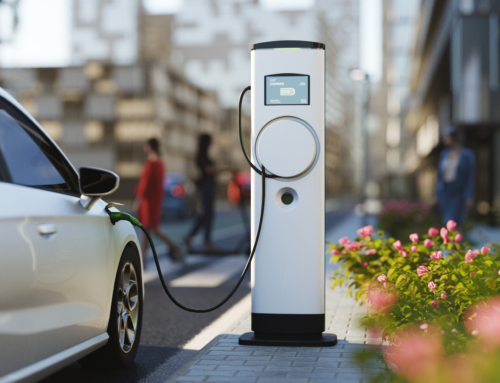Are you thinking about switching to a more eco-friendly car? This green decision provides many benefits for both the environment and the buyer. In this article, you’ll learn all about the different types of eco-friendly vehicles available, hybrid cars’ effect on the environment, and how all this affects your wallet.
The Different Types of Hybrid Cars
How eco-friendly are hybrid cars? Very, but not all vehicles deliver the same impact. As you begin your search for the eco-friendly car that will best suit your unique situation, it’s important to familiarize yourself with the different types of vehicles, how they operate, and how these hybrid cars affect the environment. Use our guide below to find the perfect eco-friendly car for you.
Hybrid
A hybrid vehicle is one that runs on both gasoline and electricity. The cooperation between an electric drive system and an internal combustion engine is able to effectively reduce emissions while increasing fuel economy, which are just a couple of the positive effects of hybrid cars. These vehicles are known for their unbeatable miles per gallon, which can save you money in the long run.
However, there is such a thing as negative effects of hybrid cars on the environment. This particular type of vehicle is praised for being eco-friendly, but it puts off more harmful emissions than most people think. In any case, it is less harmful than a traditional gas-powered vehicle.
Plug-In Hybrid
The plug-in hybrid is another eco-friendly car that combines the power of gasoline and electricity. What makes this type of vehicle a lot more beneficial for the environment as opposed to the original hybrid, is that they only run on gasoline if they have to. While more and more charging stations are popping up all over the country, they’re not always accessible. The gasoline is used only when the car battery runs out of power and can’t be charged.
Because it’s possible for this vehicle to run on electricity alone, owning one will greatly reduce your personal carbon footprint with far fewer fuel-related emissions. You’ll also save a ton of money on gas, especially during times when fuel prices escalate.

Photo Credit: JANIFEST
Electric
An electric vehicle runs entirely on electricity that is generated and stored by internal batteries. This is a fantastic option for anyone who is serious about doing their share of environmental preservation. The downside to owning an electric vehicle is making sure it’s always charged so you’re never without power. Electric cars need to be charged at least once a day and can take up to eight hours to reach a full charge.
Before buying this type of eco-friendly car, it’s very important that you do your research on the car you want to make sure it has the capability of getting you through your regular commute. It’s also important to take your local community into account; have they adapted to electric cars? Are there charging stations throughout the city for you to utilize while you’re out running errands or meeting a friend for lunch?
Diesel
Did you know that switching from a gas-powered car to a diesel-fueled engine can have a positive effect on the environment? While this change isn’t as substantial as the hybrid or electric vehicle, it’s still an improvement. By switching from gas to diesel, you can reduce the amount of greenhouse gas emissions that you contribute to the atmosphere on a daily basis. You can also increase your fuel economy for better gas mileage.
Eco-Friendly
More and more car companies are finding ways to appeal to eco-conscious consumers by making their vehicles less harmful for the environment. Eco-friendly cars offer a “green driving” mode that you can switch on and off to improve gas mileage and reduce fuel emissions. This go-green driving mode makes moderate changes to the driving experience, like shutting off the engine when the car is at a full stop, or reducing accelerating power.
Pros and Cons of Eco-Friendly Cars
It’s important to note that while eco-friendly cars are a giant step toward a more sustainable lifestyle, we still have work to do. Here are some of the pros and cons of eco-friendly cars and their effect on the environment.
Pros
- Eco-friendly cars have lower emissions than regular gas or diesel vehicles.
- These vehicles tend to use less coolant and oil, which means less hazardous waste materials.
- The batteries used in electric and hybrid cars are designed to last a lifetime. They do not need to be replaced every few years like those in gas-powered vehicles.
- They also have fewer parts than a gas vehicle, which means less fixing or replacing. Plus, fewer parts hitting the landfill.
- Charging an electric battery uses less electricity than your air conditioning or water heater and can be completed in off-peak usage times.
- Creating usable electricity from any source has far less of an environmental impact than the harmful effects of processing gasoline.
- Eco-friendly cars are also better for noise and air pollution.
Cons
- It is a mistaken assumption that these vehicles are zero-emission transportation options. Eco-friendly vehicles still create or support sources of carbon emissions.
- The traditional electricity sources used to charge your vehicle still have an environmental impact. This can be lessened by using renewable energy, such as solar panels, to charge your car.
- If they do need to be replaced, the batteries in electric cars aren’t as easy to recycle as those in gas engines.
Aid Our Environment
Are you an eco-conscious consumer who strives to make small changes in order to preserve the world in which we live? Learn more about Spring Power & Gas’s environmentally focused energy and natural gas products.




![Top 11 Sustainable Building Practices for Eco-Homes [Plus 5 Sustainable Materials]](https://springpowerandgas.us/wp-content/uploads/2023/02/iStock-181062267-500x383.jpg)

